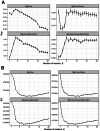Evaluating the performance of personality-based profiling in predicting physical activity
- PMID: 39695902
- PMCID: PMC11657304
- DOI: 10.1186/s40359-024-02268-6
Evaluating the performance of personality-based profiling in predicting physical activity
Abstract
Background: Profiling or clustering individuals based on personality and other characteristics is a common statistical approach used in marketing, medicine, and social sciences. This approach improves data simplicity, supports the implementation of a data-driven decision-making process, and guides intervention strategies, such as personalized care. However, the clustering process involves loss of information owing to the discretization of continuous variables. Although any loss of information may be practically or pragmatically acceptable, the amount of information lost and its influence on predicting external outcomes have not yet been systematically investigated.
Methods: We assessed the accuracy of predicting physical activity using the clustering approach and compared it with the dimensional approach, where variables are used as continuous regressors. This analysis is based on survey data from a sample of 20,573 individuals regarding physical activity and psychological traits, including the Big-Five personality traits.
Results: A four-cluster solution, supported by the standard criterion for determining the number of clusters, achieved no more than 60-70% prediction accuracy of the dimensional approach employing the raw dimensional scale as explanatory variables.
Conclusion: The cluster solution suggested by conventional statistical criteria may not be optimal when clusters are used to predict external outcomes.
Keywords: Clustering; Personality; Physical activity; Prediction; Profiling.
© 2024. The Author(s).
Conflict of interest statement
Declarations. Ethics approval and consent to participate: The study protocol was approved by the Ethics Committee of the National Institute of Advanced Industrial Science and Technology (Approval ID: 2022 − 1279). All the participants provided informed consent. The study was conducted using an online text-based survey that required participants to have basic literacy skills. Therefore, illiterate participants were not included in the study. Consent for publication: Not applicable. Competing interests: The authors declare no competing interests.
Figures




Similar articles
-
At-risk mental states and personality traits: A cluster analysis approach on a group of help-seeking young adults.Early Interv Psychiatry. 2023 Nov;17(11):1070-1078. doi: 10.1111/eip.13397. Epub 2023 Jan 16. Early Interv Psychiatry. 2023. PMID: 36646671
-
Behavioural modification interventions for medically unexplained symptoms in primary care: systematic reviews and economic evaluation.Health Technol Assess. 2020 Sep;24(46):1-490. doi: 10.3310/hta24460. Health Technol Assess. 2020. PMID: 32975190 Free PMC article.
-
A dimensional approach to assessing personality functioning: examining personality trait domains utilizing DSM-IV personality disorder criteria.Compr Psychiatry. 2015 Jan;56:75-84. doi: 10.1016/j.comppsych.2014.09.001. Epub 2014 Sep 6. Compr Psychiatry. 2015. PMID: 25261890
-
[Cluster Analysis and Ablation Success Rate in Atrial Fibrillation Patients Undergoing Catheter Ablation].Sichuan Da Xue Xue Bao Yi Xue Ban. 2024 May 20;55(3):687-692. doi: 10.12182/20240560101. Sichuan Da Xue Xue Bao Yi Xue Ban. 2024. PMID: 38948279 Free PMC article. Chinese.
-
Maternal Big Five personality traits and breastfeeding outcomes: what we know and what we don't know.Front Public Health. 2024 Nov 29;12:1484547. doi: 10.3389/fpubh.2024.1484547. eCollection 2024. Front Public Health. 2024. PMID: 39678247 Free PMC article. Review.
References
-
- El-Alti L, Sandman L, Munthe C. Person centered Care and Personalized Medicine: irreconcilable opposites or potential companions? Health Care Anal. 2019;27:45–59. - PubMed
-
- Mauch CE, Edney SM, Viana JNM, Gondalia S, Sellak H, Boud SJ, et al. Precision health in behaviour change interventions: a scoping review. Prev Med. 2022;163:107192. - PubMed
-
- Ozer DJ, Benet-Martínez V. Personality and the prediction of consequential outcomes. Annu Rev Psychol. 2006;57:401–21. - PubMed
-
- Soto CJ. How replicable are links between personality traits and consequential life outcomes? The life outcomes of personality replication project. Psychol Sci. 2019;30:711–27. - PubMed
MeSH terms
Grants and funding
LinkOut - more resources
Full Text Sources
Medical

